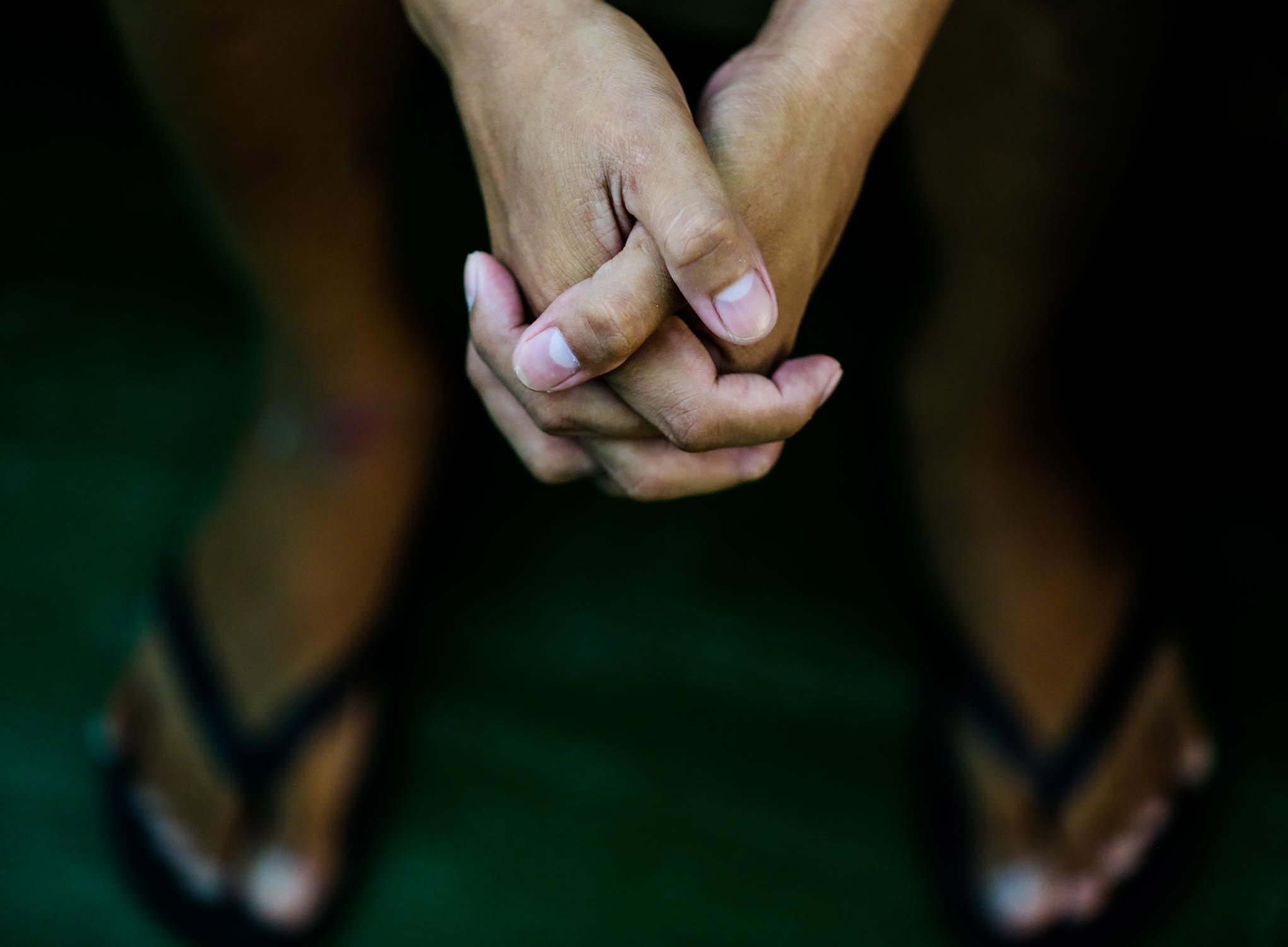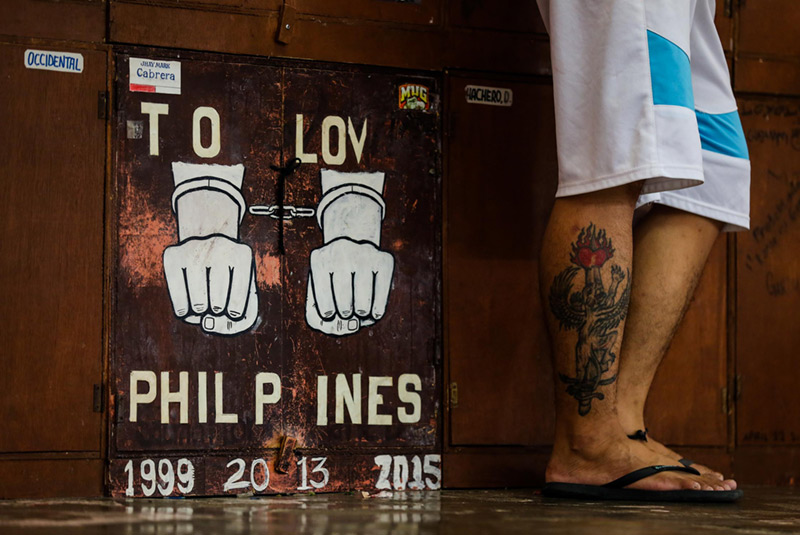After President Rodrigo Duterte declared an all-out war against illegal drugs, several local government units have started looking for money to rehabilitate the thousands who surrendered during Oplan "Tokhang,” a number nobody has expected or seen yet, even during martial law.

In a room where shades of pink express innocence, Chacha (not her real name) would give her answers with an astounding sense of self-awareness—only that her sweet voice is as fragile as her little body.
“I was in kinder when the other kids saw me and took me in,” she said. Chacha is 9, but she speaks and looks like a 5-year-old girl. She looks just like any child you would encounter playing in the streets on any given day.
Only, she wasn’t. Instead, the little girl from a poor district in Malabon City spends her days inside a rehabilitation center for her substance abuse disorder.
Chacha was first drawn to a gang addicted to solvent and, soon after, adopted their ways.
When her parents discovered her addiction three months ago, they took her to the Department of Health-Treatment and Rehabilitation Center (DOH-TRC) in Bicutan. Since then, she has been living away from her family.
Chacha is now in a safer place, in a world away from an illness that doesn’t choose its prey. In six months, she could be home again. But what kind of community would she come home to?
Three months after the police have begun knocking on doors of suspected drug users and pushers in communities, some 700,000 surrenderers across the Philippines are at the mercy of local government units’ (LGU) “trial and error” rehabilitation and after-care programs that are short of funds and lacking in direction.
Aside from participating in the dance craze Zumba and other physical activities, the hopeful drug surrenderers are left to do “experimental’ activities conducted in the absence of national government standards.
Such activities, however, are nonevidence-based—programs without sound scientific results, assessment and proven success rate. The DOH said it had yet to evaluate local strategies.
President Duterte recently said the government did not have the funds to finance the rehabilitation of drug users and would rather have them killed “in the meantime.”
Since he assumed the presidency on June 30, 2016, almost 3,500 alleged drug pushers and users have died in police operations and vigilante killings, according to statistics from the Philippine National Police. The Inquirer has verified only a third of this reported number, highlighting the stories of the dead–such as how some had already surrendered to authorities before they were killed–in a list that was started noontime of the President’s inauguration.
READ: The Kill List
Taguig City legal counsel Maricar Loinaz-Sarmiento said their mission was to save lives, not terminate them. The city has devised its own two-month program as an instinctual move after the influx of voluntary submissions.
Some LGUs are offering similar physical, psychological and spiritual interventions to surrenderers. Cities like Parañaque and Muntinlupa also offer livelihood programs to reintegrate drug dependents to society. But others do not have existing programs yet.
For Dangerous Drugs Board (DDB) chair Benjamin Reyes, the current situation was overwhelming and interventions on surrenderers must be immediately provided.
While the biggest chunk of the 669,000 drug users—up to 90 percent according to Reyes—will fall under community interventions, the 17-member board has yet to issue new provisional guidelines for LGUs on how to handle surrenderers.
But he said stakeholders could not waste this window of opportunity and must provide interventions to make the influx of drug surrenderers change their ways.
“Admittedly, for years, we have neglected the drug issue. This is the first time that this has happened. So admittedly, there are lapses. And we're trying to address this now, because this time the government is really focused to help them,” said Reyes.
Programs for drug abuse prevention and rehabilitation typically involve workshops and information campaigns. But the increase in voluntary submissions by drug dependents demands more budget for testing kits, accreditation fees and rehabilitation assistance.
Republic Act No. 9165, or the Dangerous Drugs Act of 2002, mandates that LGUs should “appropriate a substantial portion of their respective annual budgets” to assist in drug abuse prevention and treatment and rehabilitation.
But what is a substantial portion? Some LGUs are proposing that the 2017 budgets of their respective anti-drug abuse councils (Adac) be increased by up to six times, but ambiguity in the clause has prompted some to second-guess the amount they really need to solve the drug problem, especially in the grassroots level.
At least seven cities in Metro Manila have planned and begun allocating budget for their respective treatment and rehabilitation centers: Parañaque, Caloocan, Mandaluyong, Taguig, Pasig, Manila and San Juan.

Aside from funding, local Adacs also lack trained health professionals to facilitate surrenderers’ rehabilitation. Most Adacs are understaffed, and professionals on the grassroots level are increasingly becoming burdened by the influx of new patients, especially since they have to conduct profiling different from what the police do. This time, the basis is health.
Some cities, like Parañaque and Pasay, only have one DOH-accredited physician performing the assessment of surrenderers. City health offices have just begun sending some of their professional staff for training under the DOH.
“In the meantime, we train social workers and women’s desk in our 16 barangays to conduct a simple intake interview of surrenderers,” said Paranaque Adac officer in charge Andres Altarejos.
READ: More drug rehab centers sought for addicts
Belmonte’s office, meanwhile, has sent 142 focal persons to be trained by experts from private drug rehabilitation center Seagulls on how to properly extract information from surrenderers and develop ways to make them recover. Quezon City is the first LGU to have availed of the training.
At first, barangays officials were averse to the idea because of the P10,000 monthly salary and discounted training fee of P5,000 Seagulls charged to each focal person. But all fees were instead charged to the vice mayor’s existing budget. Belmonte said the DOH also offered a similar–but more expensive–training for close to P30,000.
The hardest work, however, comes after profiling surrenderers’ addictions. No matter the beat (literally), dancing drug addiction away will never be enough. What’s more important, according to are behavioral interventions.
Dr. Jasmin Peralta, program manager of DOH-Dangerous Drug Abuse Prevention and Treatment Program, said their agency’s role was to advise LGUs to craft different activities that could help drug user fully recover.
“There has to be a treatment plan,” said Peralta. “We train the health providers and the LGUs to provide an evidence-based provision of treatment and care services.”
After all, putting names on a list is a simple task but it takes a community to take them off that list for the better.
READ: Rehab or Rubout Part 2
READ: Rehab or Rubout Part 3
READ: Rehab or Rubout Part 4
Note: Three months after President Duterte first announced his all-out war on drugs, former and current drug dependents are faced with only two choices: be rubbed out by either police or vigilantes, or be rehabilitated by centers and doctors ill-prepared to cater to the overwhelming influx of drug surrenderers. The Inquirer shines a light on the latter choice in a four-part special report running from Oct. 6 to 10.